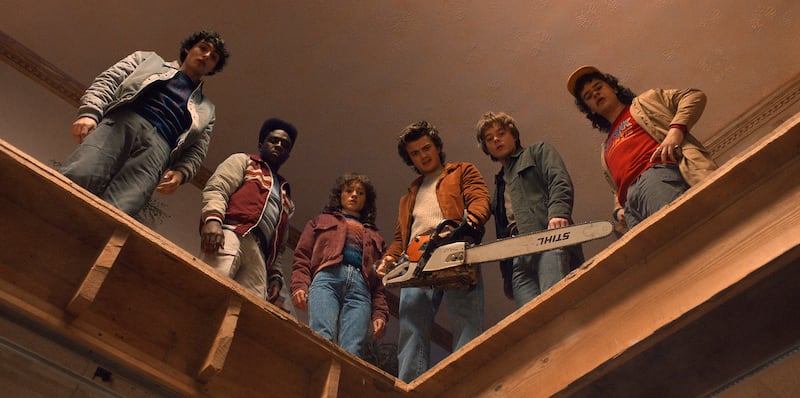What does a TV season even mean anymore?
This summer, Netflix announced that it was splitting the final season of Stranger Things into three separate parts, following shows like The Sandman and Wednesday that had their respective second seasons split into multiple parts as well.
The trend of fracturing television seasons is certainly growing, it is also ruining the TV watching experience in the process.
By breaking up seasons into various parts, streamers are losing their edge over traditional programmers and networks. In the break between the season’s parts, audiences flee elsewhere to platforms where they can either binge TV shows entirely, or watch them on the traditional week-to-week basis.
The gap between each part of these shows is only a few weeks, which is more of a grating choice than one that makes sense creatively for these series. Instead of splitting these seasons into halves, why not simply stagger their episodic releases like other streamers still do?

Week-to-week releases for shows from other streamers and cable television work because it establishes consistencies. There’s a routine there that has been in place for decades, so that, as a viewer, it’s easier to get accustomed to the mid-season break of a show like Grey’s Anatomy or 9-1-1.
But when a streamer markets itself as a place where you can consume all episodes of a new show in the same day, suddenly splitting these seasons is wildly confusing. With this fracturing of seasons now on the rise, it’s clear there is a misunderstanding of what draws viewers to modern TV’s most popular shows.
The tide is turning against the binge-model that became trendy in the late 2010s. Weekly release schedules helped skyrocket the popularity of some of this year’s most acclaimed shows, with The Pitt, The Gilded Age and The White Lotus garnering higher viewership numbers each week they were on screen. Audiences relish the weekly release experience, which allows them to watch along with friends and theorize about plot twists with other viewers online.
Netflix, once a titan in the streaming world, seems torn between emulating the successes of other shows and holding on to the binge-model that revolutionized modern television.
Staggering these split seasons with such short breaks in between doesn’t build anticipation for casual viewers and dedicated fans, nor does it allow these shows to hold space in viewers’ minds for longer than a few days. Instead, these seasons (and their respective shows) fizzle out; they linger in our minds for a brief moment, before disappearing from the cultural consciousness altogether. This gap between seasons kills the momentum of many of these shows entirely.

The Sandman was a massive success in its first season, ranking at number one globally on Netflix’s Top 10 titles with 69.5 million hours viewed. Its second and final season, separated into two separate volumes with a final singular episode released a few days after that, came and went without much fanfare.
Compared to its first season’s shattering numbers, Season 2 only garnered 28.2 million hours viewed during its first week of its release. While we could chalk that up to the allegations surrounding Neil Gaiman, it’s clear that this split-release model, and the three years it took for this second season to come out, also hindered its success.
None of these shows—save for Stranger Things—have secured enough of a position in the cultural zeitgeist to warrant being split up like this. In the case of the science fiction series, it is undeniably one of the biggest shows of the last decade. By splitting the final season up, it’s clear Netflix wants to emulate blockbuster film tactics seen in Marvel’s Infinity War and Avengers: Endgame, staggering the final episodes as if they were three separate films, rather than three separate parts of the same season. While the final season of the series is highly anticipated by some, the time it’s taken for it to come out has hindered its relevancy.

Netflix’s binge model was created to emulate that of the movie-theatre experience; watch a whole story unfold in the span of a day, but in the comfort of your own home. Now, the streamer exists in a limbo between what originally drew subscribers to their company and how TV was originally meant to be viewed.
Breaking television seasons apart doesn’t benefit the viewer or the creative teams behind these shows. It benefits the business. It’s clear that streamers are desperate to entice their viewers with crumbs rather than a whole meal, like an owner drawing their skittish dog in with a bone.
The result is an unsatisfied audience who longs for the days when TV was released weekly, but who have no idea how to seek that out in a television landscape dominated by streamers who grow more out of touch by the year.









